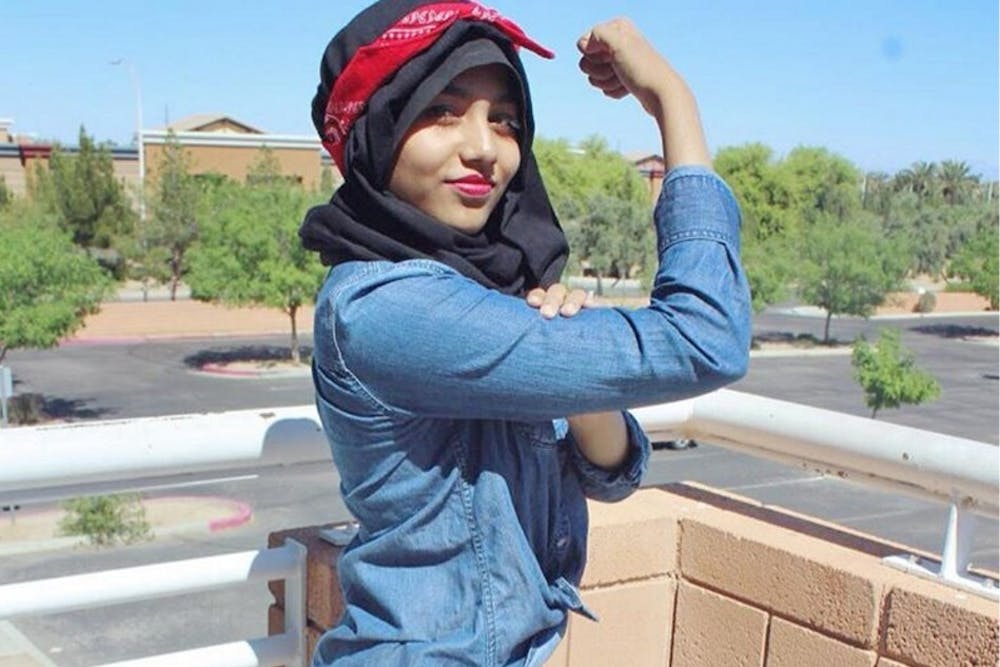There are almost 3.3 million people who identify as Muslim living in the United States today, according to the Pew Research Center. While over 60% of American people report holding a negative opinion of Islam, ASU Muslim students aren’t intimidated into hiding their faith.
Instead, many of them are turning to art—not only to break the political stigma and share their beliefs, but also to connect themselves to their faith, their families and the community around them.
Leah Sarat Ph.D, a professor of religious studies at ASU, will be hosting a film viewing and discussion on Oct. 4 that deals with all of these topics in conjunction with Hispanic Heritage Month. The film being discussed is “New Muslim Cool,” a 2009 film which follows Hamza Perez, a Puerto-Rican born hip-hop artist who converts to Islam, spreads a message of faith and battles anti-Muslim sentiment through his music.
Sarat will lead a discussion after the film viewing, focusing on the dynamics of Latinxs who convert to Islam, the relationship between religious and ethnic identities in America and the importance of art in spreading these messages.
Sarat said she hopes that by discussing this film, she can shed some light on the importance of the role of hip-hop in heritage, religion and identity.
“Academics don’t give the art form of hip-hop the credibility it deserves," she said. "It is a vibrant, important form of spoken-word poetry in which people are discussing identity, meaning and justice."
Sarat is the daughter of a visual artist and said she became interested in the intersection of art and faith when she took a studio drawing class as an undergraduate student. In the class, students would create artwork that tapped into the subconscious and reflected their religious experiences.
“Because artists engage in physical things — pigments, soundwaves, mediums – they are also concerned with that intersection between what is embodied and unconscious and what is more explicit," she said. "There is a lot of overlap between religion and art."
Film junior and Muslim student Nafisa Thorpe said art has been bringing her closer to her family since she was a little girl. Her father had five brothers and two sisters, and the whole extended family would connect with one another by going to the movies and then discussing the films. This started a life-long passion and a great opportunity to share her faith.
“Film is a universal language," Thorpe said. "It builds a bridge between different cultures and communities. It is relatable, entertaining and everyone can take something away from a film."
As a student in high school, she always chose to do projects where she could have a video camera in hand, and now that she's at the college level, she said she hopes to show people the truth about Islam through her art instead of the shock and fear tactics popularly perpetrated by the media.
Thorpe made a short documentary in high school showcasing the diversity of the Muslim community, and in college, she filmed a video in response to the 2015 Chapel Hill shootings that aimed to show that Muslim students are regular human beings who are positive members of the community.
Thorpe said she feels that these projects not only share her religion with others, but also bring her closer to her own faith.
“When I make these videos, I have to do a lot of research about Islam, which gets me actively involved in my religion and also allows me to learn more about it,” Thorpe said.
Microbiology freshman Tabark Abdelhabib said she thinks art is a great way to bring public attention to certain issues that may have previously been under the radar. She gave the example of the outrage at the Syrian refugee crisis that was sparked after the photograph of a Syrian boy washed up on the Turkish shore was widely circulated.
“Art is an icebreaker," Abdelhabib said. "It allows you to speak human-to-human, regardless of culture."
Abdelhabib said she is very passionate about photography, and she uses this medium to share her faith and her Muslim experience with others. She runs an Instagram account, @6_Blissful_Beauties, that is dedicated to showcasing the fashion of Muslim women. She said she hopes these pictures might break the stigma that Muslims are somehow outsiders to the community and not included in American trends, or that women are somehow lesser in Muslim culture.
“The account shows these Muslim girls doing things others might not expect,” said Abdelhabib, referring to a picture of a girl smiling and swinging on a light pole. “It’s colorful, it’s different. It shows that fashion relates to all people, even Muslims.”
As well as showcasing modern-day Muslim fashion, Abdelhabib’s family is originally from Sudan, and she incorporates the green beads and African style of the Sudanese in her wardrobe, which brings her closer to and gives her an appreciation of her heritage.
Both Thorpe and Abdelhabib said they also want to communicate that connecting art to religion is an inter-faith idea. Abdelhabib mentioned that she finds inspiration and reaffirmation in some Christian YouTube videos, and both women expressed interest in participating in an art collective that combines all faiths.
"I think people would love to participate and see something like that," Thorpe said. "There would be support to start a project along those lines."
The "New Muslim Cool" viewing and discussion will be held Oct. 4 in Memorial Union 228 Cochise from 7 - 9 p.m. More information can be found on the Hispanic Heritage Month’s page or by emailing Sarat directly at leah.sarat@asu.edu.
Reach the reporter at cagoldin@asu.edu or follow @auruming on Twitter.
Like The State Press on Facebook and follow @statepress on Twitter.




